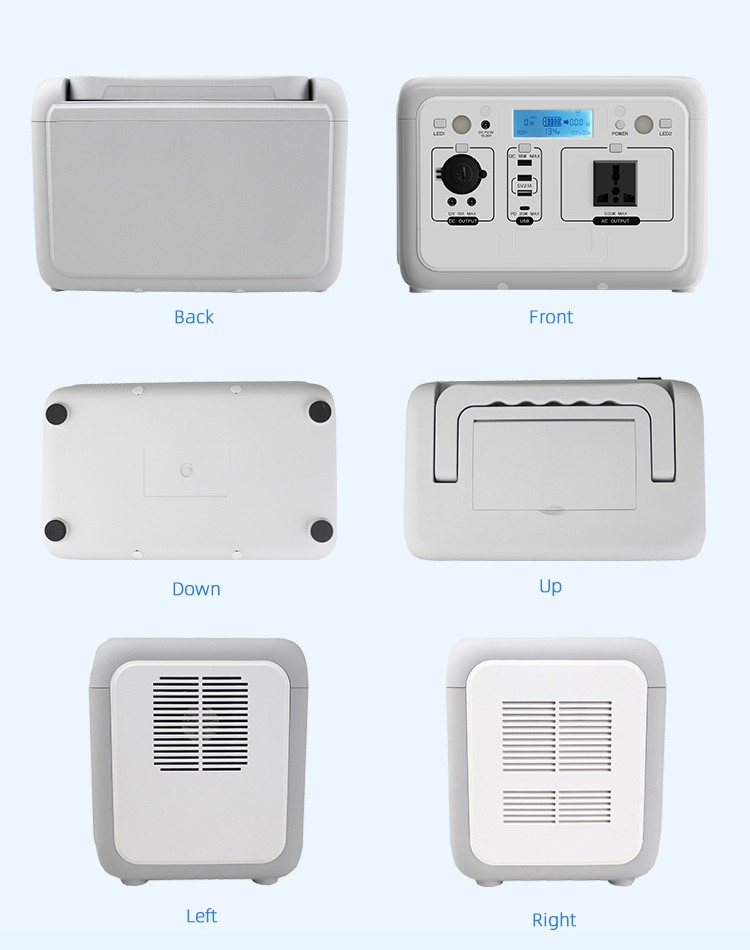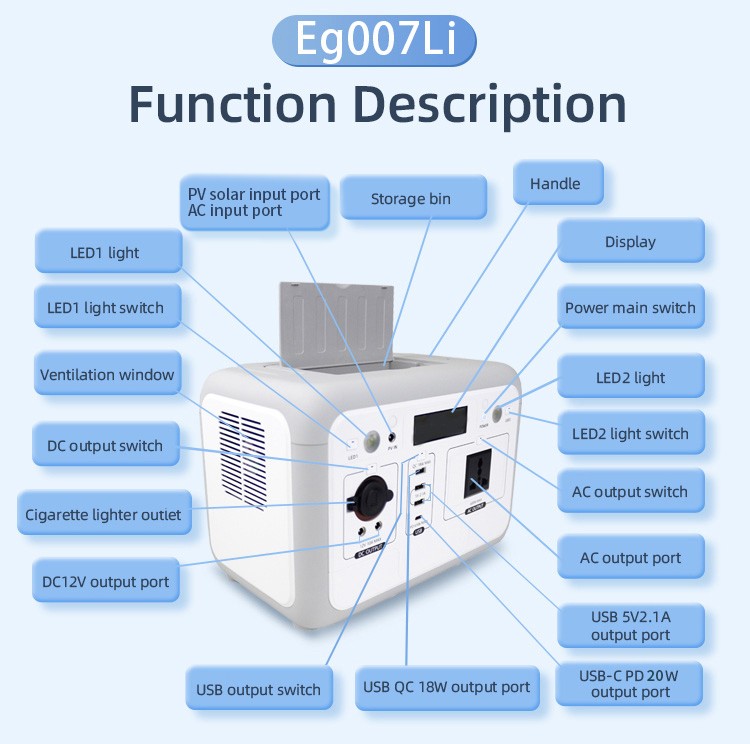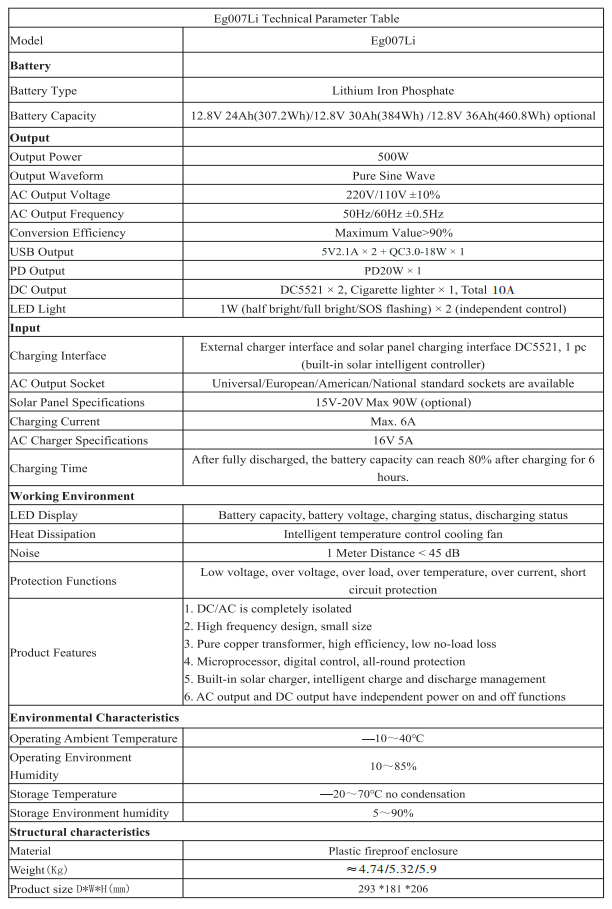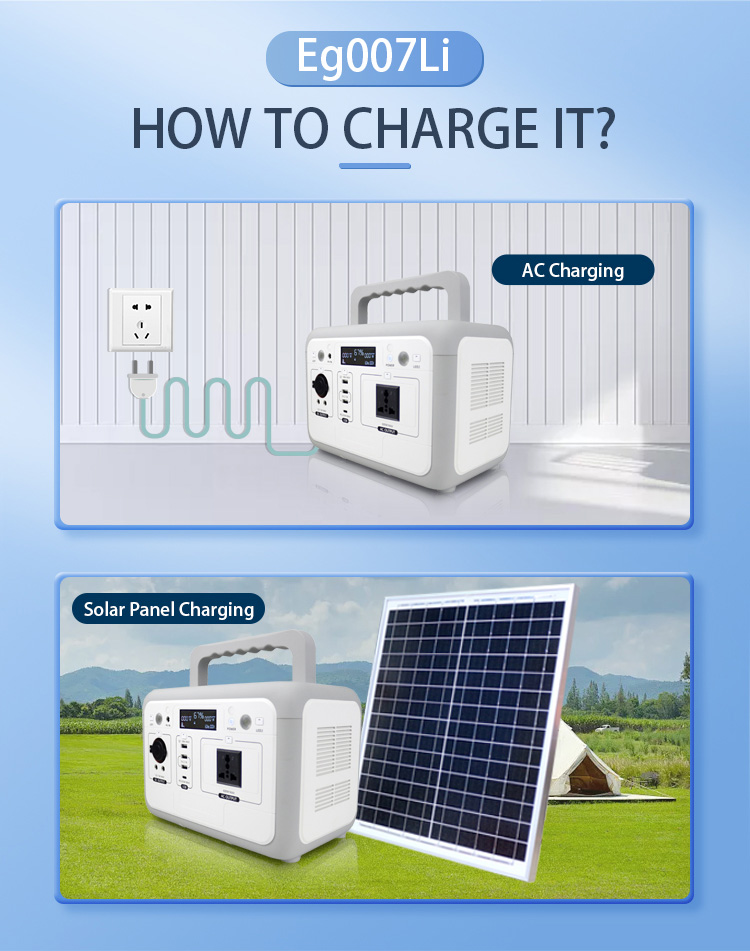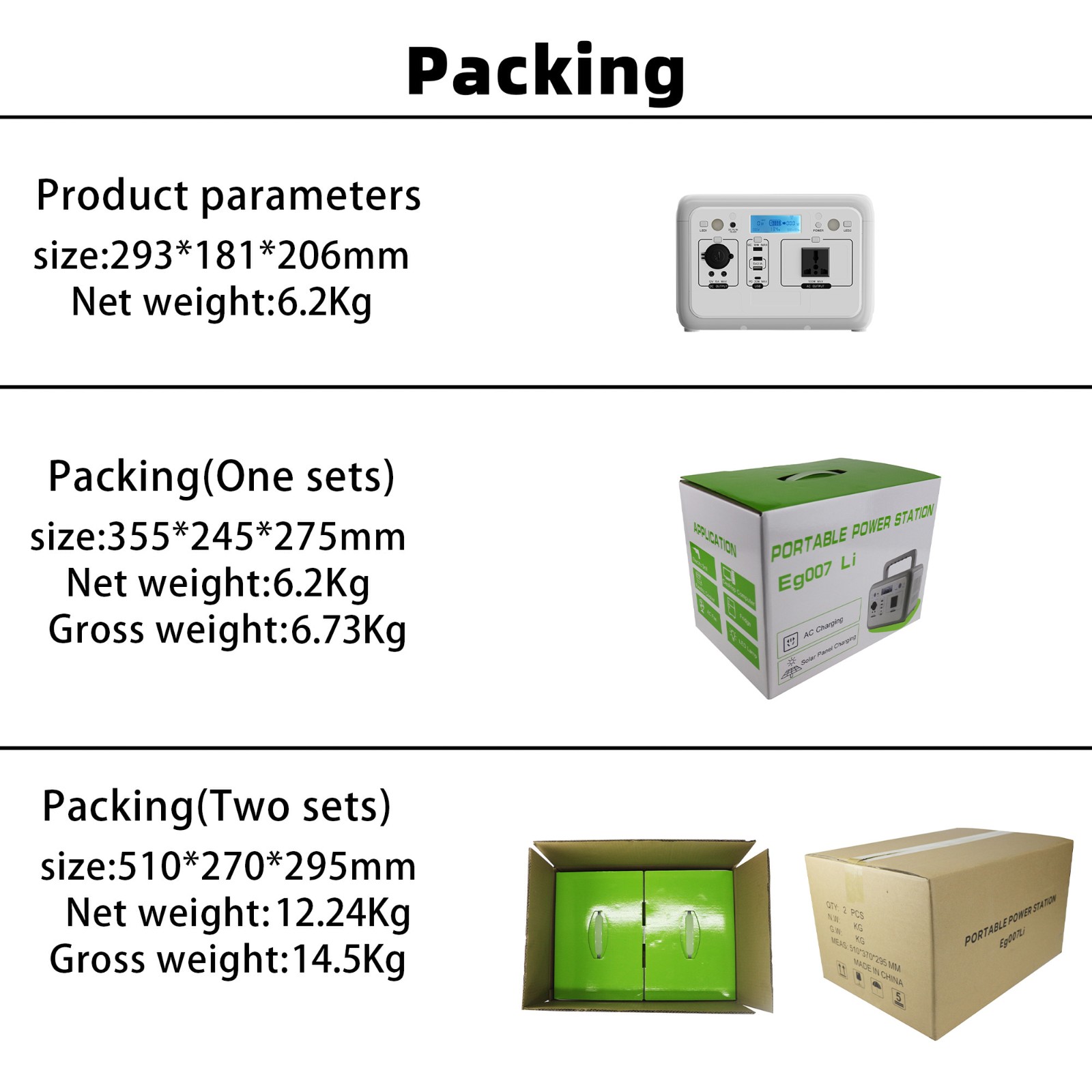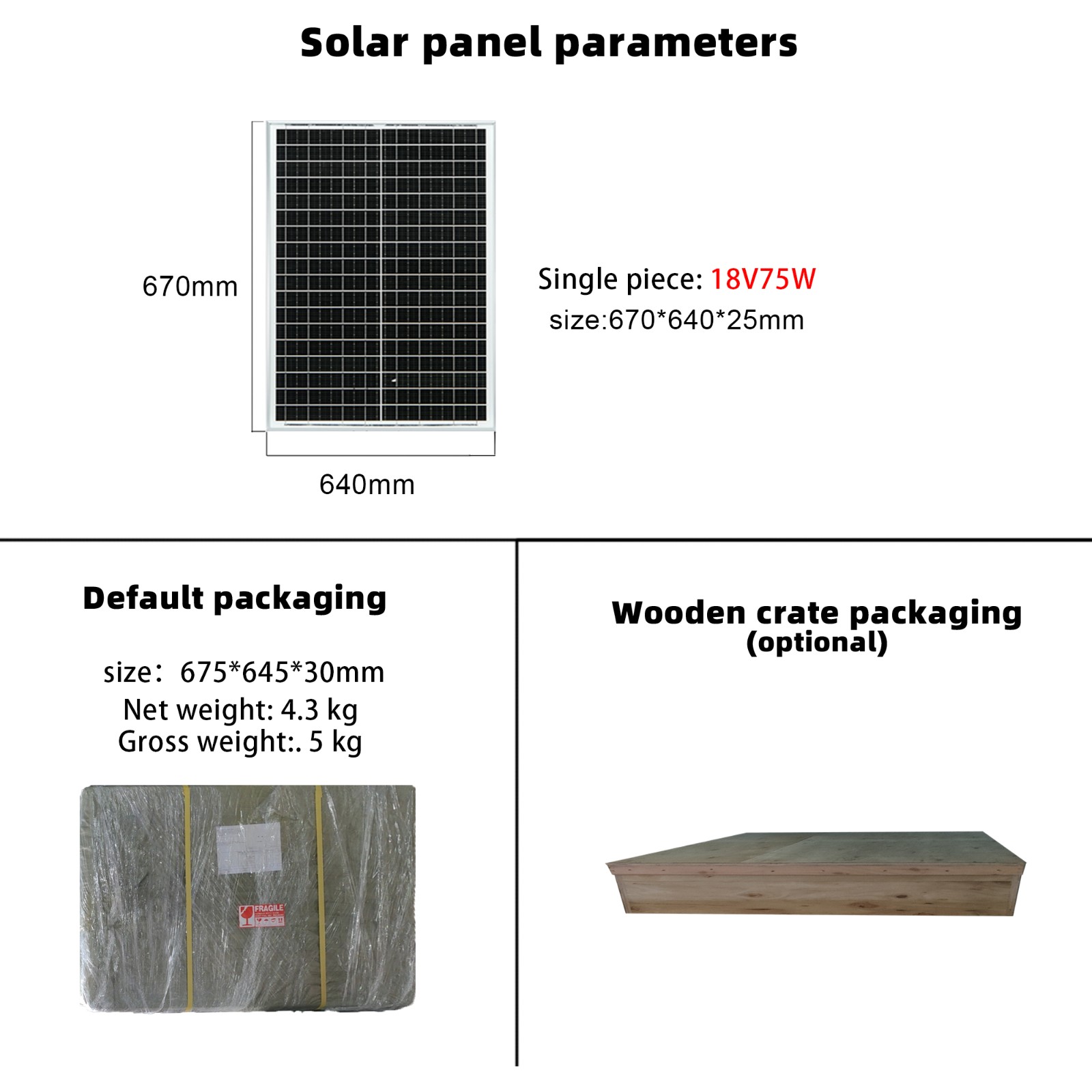
What are the uses of a 0.5 kWh portable power station?
Nov. 08, 2025
The 0.5 kWh (0.5 kWh) marked on portable power station is a unit of energy. The actual device it can power and how long it can last depends on the device's power requirements. The following are typical application examples in different scenarios to help you better understand its uses:
���️ Outdoor Activities and Short Trips
Mobile Phone/Tablet Charging: It can fully charge a typical smartphone approximately 25 times (based on 0.02 kWh per charge) or a tablet approximately 16 times. This is enough for lightweight travel needs for about a week.
Lighting and Atmosphere: It can power a 10W LED light for approximately 50 hours, perfect for nighttime camping or creating an outdoor atmosphere.
Small Appliances: It can power a mini refrigerator for 6-8 hours, keeping beverages or medicines cool, or a vacuum cleaner for 40 minutes to clean dust in a tent or car.
Basic Cooking: Boil a pot of water (approximately 1.5L) in an electric kettle in 30 minutes, enough for instant noodles or coffee. Microwave ovens can heat meals in about 35 minutes (medium heat). ��� Home Emergency Backup
Communications: Powers mobile phones and wireless routers to ensure communication in emergencies.
Medical Support: Powers a small oxygen concentrator for 3-5 hours, crucial for patients with chronic conditions; can also charge medical equipment such as blood pressure monitors and blood glucose meters multiple times.
Basic Living: Combined with an energy-saving fan (30-50W), it can run for over 10 hours to alleviate the heat during a power outage; a flashlight or emergency light can be used for extended standby as a safe light source.
Limited Household Chores: Briefly use the rice cooker to cook two servings of rice (approximately 1 hour), or vacuum quickly to clean key areas.
��� Digital Creation and Mobile Office
Electronic Device Battery Life: Provides approximately 7 hours of light use for a gaming laptop (65W), suitable for casual document processing or video conferencing; multiple charges for DSLR cameras to meet photography needs.
Creative Tools: Projectors (60-100W) can play movies or PowerPoint presentations for 5-8 hours, perfect for outdoor gatherings or meetings. Drone Recharge: Fully charges consumer drones like the Mavic Air approximately 10 times, consuming approximately 0.05 kWh per flight, expanding the possibilities of aerial photography.
⛑️ Special Environments and Professional Uses
In-Car Companion: Power your car's refrigerator and air pump via the car charger port, allowing you to enjoy cold drinks or adjust tire pressure on the go during road trips.
Scientific Research: Provides stable power for measuring instruments and data acquisition equipment in off-grid environments, supporting short-term scientific expeditions.
Disaster Emergency: After disasters like earthquakes and floods, it can serve as a temporary power source for radios receiving rescue information or for simple medical equipment.
⚠️ Limitations to Note
Use with caution with high-power devices: High-power appliances (typically over 1000W), such as air conditioners, washing machines, and ovens, cannot be used for extended periods, requiring only very short periods.
Ambient Temperature Impact: Low temperatures reduce battery activity, and the actual available power can decrease by over 30% during winter use.
Rational Power Allocation: Prioritize essential equipment (such as communications and medical devices) to avoid overconsumption that could cause power outages at critical moments. ��� Usage Recommendations
Lightweight Configuration: Choose low-power devices (such as USB-C fast chargers and energy-saving LED lights) to extend overall battery life.
Solar Complementary: Paired with solar panels for continuous charging outdoors, it overcomes the limitations of single-use energy storage.
Tiered Management: Prioritize devices based on their importance, prioritizing core functions (such as lighting and communications) before considering non-essential appliances.
In summary, a 0.5kWh portable power station is more suitable for short-term emergencies, light outdoor activities, or as a basic home backup power source. It can meet most daily low-power needs, but it should be used with caution in high-energy scenarios.

